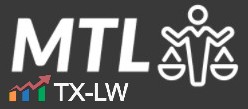Our tax laws usually look to various foundational definitions, such as units of property, activities, or even roles. When it comes to workers who receive compensation for their work, it is often the role that matters the most.
We see this in disputes over whether a contractor is really an employee for payroll tax purposes. We also see it in questions as to whether a business owner is an employee for the 2% shareholder for S corporations. There are numerous other examples in the tax law.
Most of these focus on the extremes, i.e., the person is an employee or the person is a contractor. But there is a middle ground. The person could be a statutory employee. While not all that common, it is often a much more tax favorable role than being an employee as they can deduct their work expenses just as an independent contractor could.
The recent Gil v. United States, No. 2:24-cv-00825 (E.D. Pa. 2025), provides an opportunity to consider the statutory employee rules. The case involves a financial advisor who sought to be classified as a statutory employee rather than a common law employee.
Contents
Facts & Procedural History
This case involves a financial advisor who had 35 years of experience. He worked his way through Prudential Securities, Wachovia, and finally Wells Fargo, where he remained for ten to fifteen years. Throughout his career, he performed identical duties at the same physical office while his employer’s name, business, etc. changed through corporate acquisitions.
At Wells Fargo, the taxpayer operated independently. He maintained his own client base, developed financial plans, and assisted with investments across multiple companies’ products. Paid exclusively through commissions with no earning cap, he controlled his income potential entirely through performance. Following the Covid-19 pandemic, he transitioned to primarily working from home, visiting the office only to collect mail or use equipment.
Despite this flexibility, Wells Fargo maintained some control. The taxpayer reported regularly to his branch manager, who conducted annual performance reviews and set performance goals. Wells Fargo monitored his Outlook calendar for client meetings and required him to complete annual continuing education courses selected and funded by the firm. The company could terminate the taxpayer without notice, and upon departure, his client list would become Wells Fargo property.
Wells Fargo provided the taxpayer with employee benefits including health insurance and 401(k) participation. The company covered office lease costs, supplied computers and printers, employed office assistants to support his work, and maintained a website featuring his contact information. While he paid for client entertainment and travel expenses, Wells Fargo offered an expense reimbursement program for financial advisors generating over one million dollars in revenue.
For both 2020 and 2021, Wells Fargo issued the taxpayer Form W-2s reflecting his status as an “exempt employee” and withheld federal and state income taxes, Medicare, and Social Security taxes. The taxpayer had repeatedly requested reclassification as a statutory employee throughout his tenure, but Wells Fargo consistently denied these requests.
The taxpayer and his wife filed joint returns for 2020 and 2021, reporting his W-2 income on Schedule C forms and seeking refunds of $36,896 and $36,679 respectively. The IRS rejected these returns and imposed a $5,000 penalty for frivolous filing. After unsuccessful administrative appeals, the the taxpayer and spouse filed suit in federal district court. Both the government and taxpayer filed cross-motions for summary judgment as to statutory employee rules, which are often involved in payroll tax disputes and employee vs. contractor disputes.
The Tax Code Framework for Employee Classification
Section 3121(d) of the tax code sets out three distinct tests for determining employee status. These tests create separate pathways for classification. Each has different requirements and tax consequences.
The first test addresses corporate officers. Corporate officers are generally considered employees. The second test applies common-law rules to determine whether a traditional employer-employee relationship exists. The third test creates special categories of workers who, while not common-law employees, receive statutory employee treatment for employment tax purposes.
The classification framework operates as a hierarchy rather than overlapping categories. A worker can only fall into one classification, and the statute establishes a specific order of precedence. Corporate officers automatically qualify as employees under paragraph (1). Workers who don’t fit the corporate officer category but satisfy the common-law employee test become employees under paragraph (2). Only workers who fail both the corporate officer and common-law employee tests can potentially qualify as statutory employees under paragraph (3). Those that do not fit any of these provisions are independent contractors.
This leaves three categories of workers and the tax consequences of each:
- Corporate officers and common-law employees. They face the most restrictive tax treatment. They cannot deduct business expenses on Schedule C, which eliminates deductions for items like client entertainment, travel, professional development, and home office expenses. These workers also have payroll taxes withheld by their employers and cannot claim the business use of home deduction or depreciation on business equipment.
- Statutory employees. These workers occupy a unique middle ground that offers significant advantages. Like employees, they have payroll taxes withheld by their employers and don’t pay self-employment tax. However, like independent contractors, they can file Schedule C and deduct business expenses against their income. This hybrid status provides the security of employment tax treatment with the deduction benefits of contractor status.
- Independent contractors. These workers enjoy the most favorable tax position. They file Schedule C to report business income and can deduct all ordinary and necessary business expenses against that income. They pay self-employment tax on their net earnings but gain access to business deductions unavailable to employees. Independent contractors can also establish simplified employee pension plans and other retirement vehicles that provide additional tax benefits. There are numerous examples of those who qualify as independent contractors, but this is an area that the IRS frequently challenges.
We have covered cases on this site about employee vs. independent contractor disputes, but we haven’t addressed the statutory employee rules. Since the rules start with the common-law employee analysis, we’ll start with a brief overview of the common-law employee rules.
What Makes Someone a Statutory Employee?
Statutory employees must satisfy three preliminary conditions. The contract of service must contemplate that substantially all services will be performed personally by the individual, the individual must lack substantial investment in work facilities (except transportation), and services must be part of a continuing relationship rather than a single transaction.
In addition to this, there are industry specific requirements that have to be met. The tax code identifies four specific categories of statutory employees:
- agent-drivers or commission-drivers distributing certain products,
- full-time life insurance salesmen,
- home workers performing services according to specifications on provided materials, and
- traveling or city salesmen soliciting orders for merchandise or supplies.
These categories target workers in industries where traditional employee-contractor distinctions don’t align well with actual working relationships. A full-time life insurance salesman, for example, might operate with significant autonomy while remaining economically dependent on a single insurance company.
Each statutory employee category has detailed requirements that have to be met. The regulations don’t simply describe job titles but focus on actual work activities and business relationships. A worker’s formal job description matters less than how they actually perform their duties and structure their business relationships.
The Full-Time Life Insurance Salesman Category
The full-time life insurance salesman category is at issue in this case. So we will use it as an example.
This category requires that the individual’s “entire or principal business activity” be “devoted to the solicitation of life insurance or annuity contracts, or both, primarily for one life insurance company.” This language creates multiple requirements that must all be satisfied.
The “entire or principal business activity” test means life insurance solicitation must dominate the worker’s professional efforts. Someone who splits time between insurance sales and other professional activities wouldn’t qualify. The regulation specifically excludes individuals who “devote only part time to the solicitation of life insurance contracts” while being “principally engaged in other endeavors.”
The “primarily for one life insurance company” requirement creates an exclusivity element. While the regulation doesn’t demand absolute exclusivity, it requires that the worker’s efforts be concentrated on one company’s products rather than distributed across multiple companies or product lines.
These requirements reflect Congress’s intent to capture workers genuinely dedicated to life insurance sales for a specific company, not generalist financial advisors who occasionally sell insurance products among many other financial instruments.
What About Diversified Financial Advisory Services?
The court applied the eight-factor common-law employee test. It found seven factors supported employee status.
As for the statutory employee issue, the court concluded that the taxpayer was not a statutory employee. This was based on a review of his responsibilities, which went beyond life insurance solicitation to include broad financial planning, investment advice, and portfolio diversification across multiple companies’ products.
The court found that the taxpayer “encouraged clients to diversify their investment portfolios and sold instruments from a variety of companies.” This diversification strategy, while sound financial advice, directly contradicted the regulatory requirement for concentration on one life insurance company’s products.
The taxpayer’s work pattern also failed the “entire or principal business activity” test. Life insurance and annuity sales represented only a portion of his comprehensive advisory services. His primary focus was holistic financial planning rather than specialized insurance product solicitation.
The language in the regulation for workers whose efforts are “devoted to” life insurance solicitation contemplates a level of specialization and focus that the taxpayer’s diversified practice couldn’t satisfy. His broad advisory role, while valuable to clients, simply didn’t fit the narrow statutory employee category.
The Takeaway
This case shows that workers cannot simply file Schedule C forms to claim statutory employee benefits when they’re actually employees. The underlying work relationship determines tax treatment, not the taxpayer’s preferred filing method. The case also shows that modern flexible work arrangements don’t automatically create statutory employee status, even for workers with significant autonomy over their schedules and clients. Qualifying as a statutory employee requires meeting very specific regulatory categories with detailed requirements, as illustrated by the narrow life insurance salesman rules that excluded this diversified financial advisor.
Watch Our Free On-Demand Webinar
In 40 minutes, we'll teach you how to survive an IRS audit.
We'll explain how the IRS conducts audits and how to manage and close the audit.


